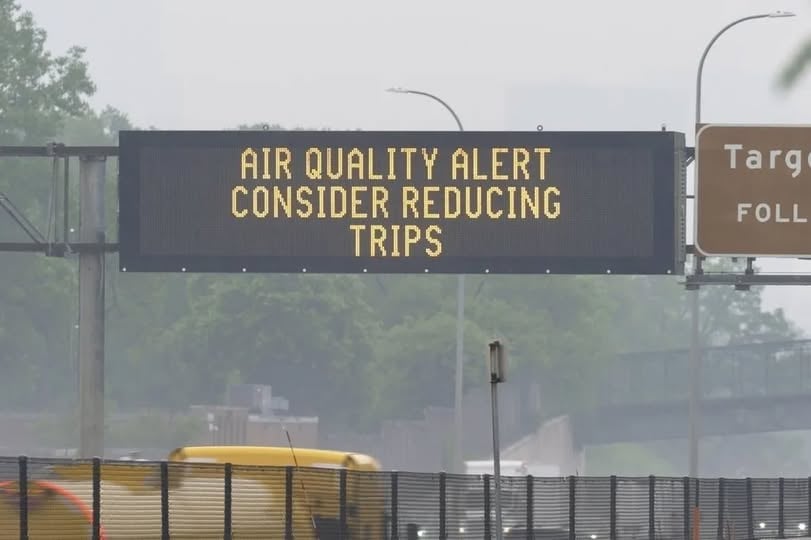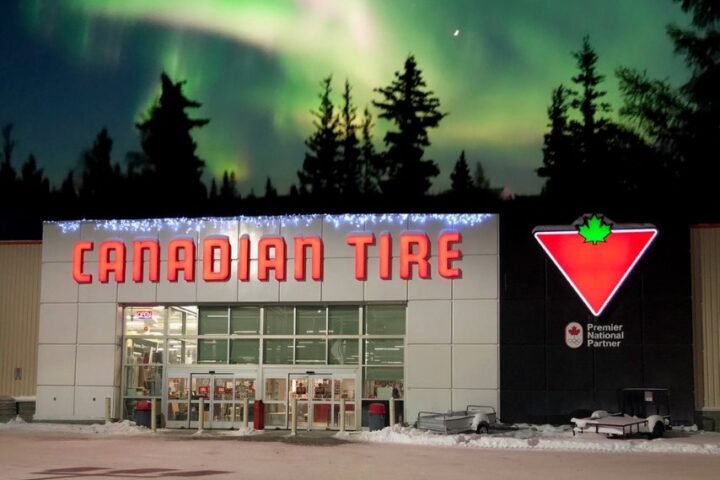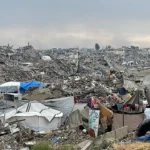Smoke from wildfires burning in Western Canada has drifted into Toronto and much of Southern Ontario, pushing air quality to dangerous levels and prompting health warnings across the region.
Environment Canada has issued a special air quality statement covering areas from Windsor to Ottawa, including Toronto where the Air Quality Health Index (AQHI) has hit 7 out of 10 on Friday, placing it in the “high risk” category. The situation is severe enough that Toronto ranked as the fifth worst city globally for air quality as of 10 a.m., according to Swiss air quality tracker IQAir. Only Montreal fared worse among Canadian cities.
The smoke comes from extensive wildfires in Manitoba, Saskatchewan, and Alberta. According to FireSmoke Canada’s forecast, this haze will spread across Toronto throughout Friday before starting to lighten around 10 p.m., though more smoke is expected to arrive by noon Saturday.
Similar Posts
The Copernicus Atmosphere Monitoring Service noted that the smoke’s extensive reach reflects the massive scale of these fires. Manitoba’s fire emissions have shattered previous records, exceeding the 2023 record by roughly 13 megatons of carbon.
On Thursday, Toronto residents reported the air smelled like “burning plastic” – a telling sign of harmful fine particulate matter called PM2.5. These tiny particles, smaller than 2.5 micrometers, are particularly dangerous because they can bypass our body’s natural defenses. They penetrate deep into the lungs and may enter the bloodstream, causing both immediate and long-term health problems.
Exposure to wildfire smoke typically causes eye, nose, and throat irritation, headaches, and mild coughing. In more serious cases, people might experience wheezing, chest pains, or severe coughing. The elderly, pregnant women, young children, those with existing health conditions like asthma or heart disease, and outdoor workers face the highest risk from poor air quality.
Health officials advise everyone to limit outdoor time during these conditions and consider postponing strenuous activities and sports. When going outside becomes necessary, a properly fitted N95 respirator mask provides the best protection against these harmful particles.
To maintain better indoor air quality, keep windows and doors closed. Good quality air filters in home ventilation systems help remove smoke particles. However, Environment Canada emphasizes that during extreme heat events, staying cool should take priority over avoiding smoky air.

The 2025 wildfire season is already on track to be among Canada’s worst, with total estimated fire emissions second only to the devastating 2023 season. Climate scientists connect the increasing frequency and intensity of Canadian wildfires to climate change, which creates ideal conditions for larger, more destructive fires through prolonged dry periods and record-breaking heat.
Anyone experiencing severe symptoms should seek immediate medical attention. Health officials also recommend checking on neighbors and family members who might be particularly vulnerable during this hazardous air quality event.


















